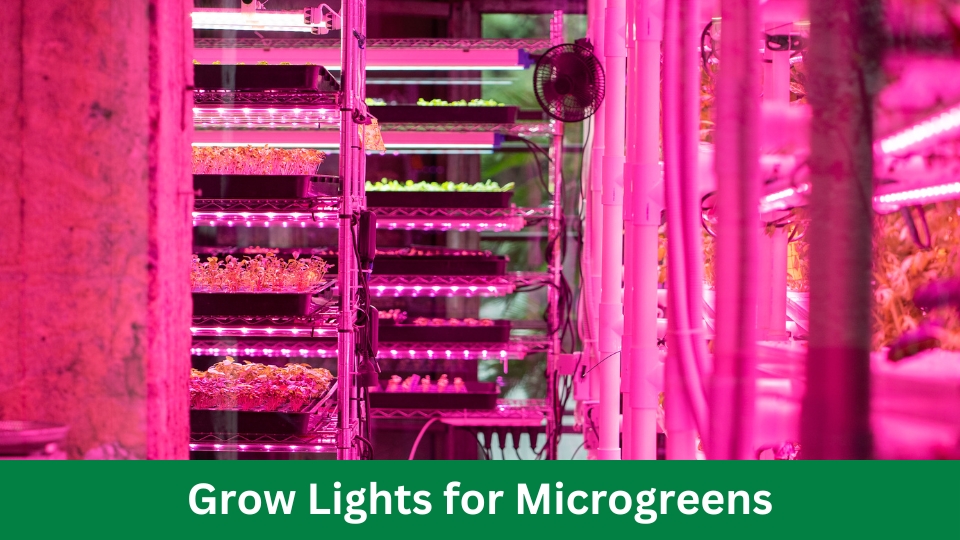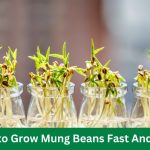Grow lights are essential for microgreens to stimulate photosynthesis and growth indoors. These lights provide the necessary spectrum and intensity of light that microgreens need to thrive.
Growing microgreens has become a popular endeavor for both home gardeners and commercial growers seeking to cultivate healthy, flavorful plants quickly and efficiently. Microgreens, young vegetable and herb seedlings, offer a concentrated nutrient profile. They are typically harvested shortly after sprouting and developing their first true leaves.
Grow lights are crucial in this process, especially in environments lacking adequate natural sunlight. Using the correct grow lights ensures your microgreens receive the optimal light waves for photosynthesis, leading to robust growth and a high-quality crop. The key is to select lights that mimic sunlight’s spectrum and deliver sufficient luminosity to penetrate the plant canopy. This is while being energy-efficient.
The Rise Of Indoor Microgreens Farming
Indoor microgreens farming is a growing trend among health-conscious urban dwellers. It allows people to cultivate their own nutritious greens in a compact space.
The importance of sustainable methods in our diets makes microgreens ideal. They are tasty and packed with nutrients, and now, thanks to advanced grow lights, year-round cultivation is possible.
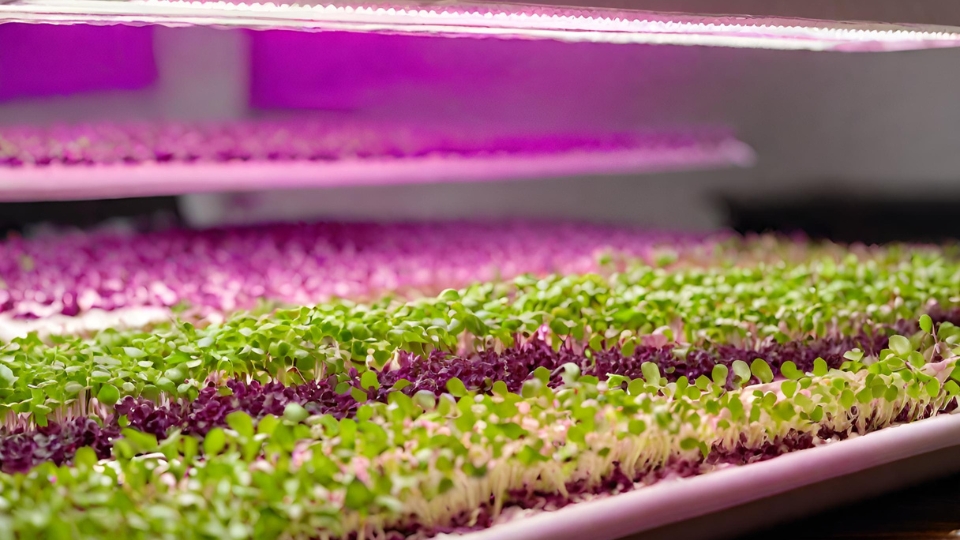
Benefits Of Growing Microgreens Indoors
- Less water usage: Microgreens require minimal water compared to traditional farming.
- Year-round growth: Forget about seasonal changes. Grow lights emulate the sun, ensuring constant production.
- No pests: Microgreens are protected from insects and diseases by growing indoors.
- Space-saving: They can grow in tiny apartments. No garden is necessary.
- Energy-efficient: Modern grow lights use LED technology, reducing electricity costs.
Why Microgreens Are Perfect For Urban Gardeners
Growing microgreens is a smart choice for city residents. Space is at a premium, and traditional gardens are rare. Microgreens thrive in small spaces with the right light.
They offer quick harvests, often ready in less than two weeks. They require minimal care, making them ideal for busy lifestyles.
| Benefit | Description |
|---|---|
| Space Efficiency | Grow vertically or horizontally with limited space. |
| Quick Turnaround | Seed to harvest in as little as 7 days. |
| Nutrient-Dense | It is packed with vitamins, minerals, and antioxidants. |
Understanding Grow Lights
Growing microgreens indoors requires proper lighting. Grow lights play a crucial role. They provide your greens with the needed light energy. Understanding how these lights work and which type to choose for your setup is vital.
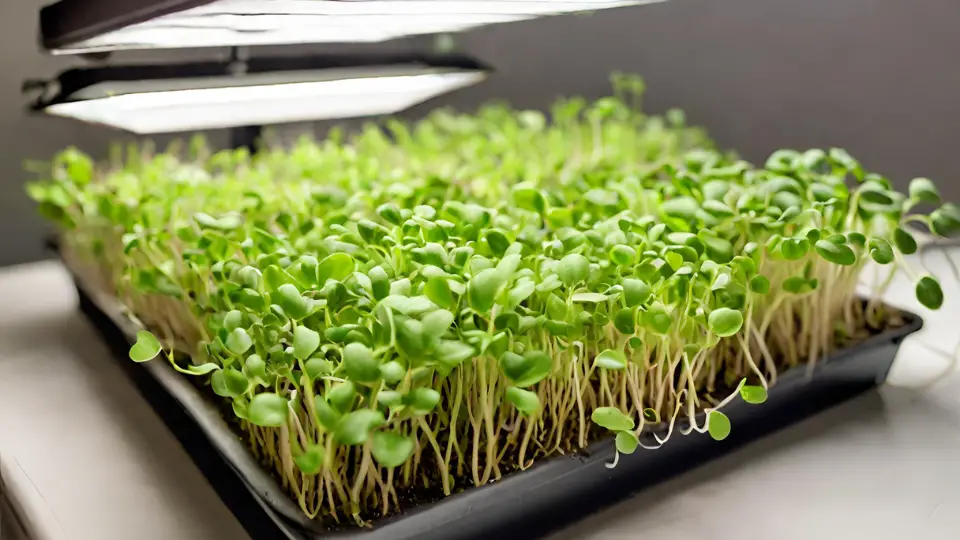
Types Of Grow Lights Available
Different grow lights offer various benefits to your microgreens. Here’s a quick overview:
- Fluorescent lights: Energy-efficient and excellent for beginners.
- LED lights: Long-lasting, they emit a light perfect for plant growth.
- HID lights: High intensity but tend to produce more heat.
How to Grow Lights Mimic Sunlight For Plants
Grow lights serve as the sun for indoor plants. They emit a light spectrum that plants need for photosynthesis. Quality grow lights produce a balance of cool and warm light. This balance mimics natural sunlight, which is essential for healthy growth.
| Light Type | Color Temperature | Spectrum Mimicked |
|---|---|---|
| Fluorescent | Cool white | Blue Spectrum |
| LED | Varies | Full Spectrum |
| HID | Warm | Red/Orange Spectrum |
Opting for full-spectrum LED lights ensures your microgreens get a light similar to sunlight. This helps them grow strong and healthy.
Selecting The Right Grow Lights For Your Greens
Growing microgreens at home is an efficient way to ensure a year-round supply of nutritious greens. Choosing the correct grow light is essential for robust growth and optimal harvests.
The right grow light can make all the difference in producing vibrant, healthy microgreens. Let’s explore the factors and compare LED and fluorescent lighting options.
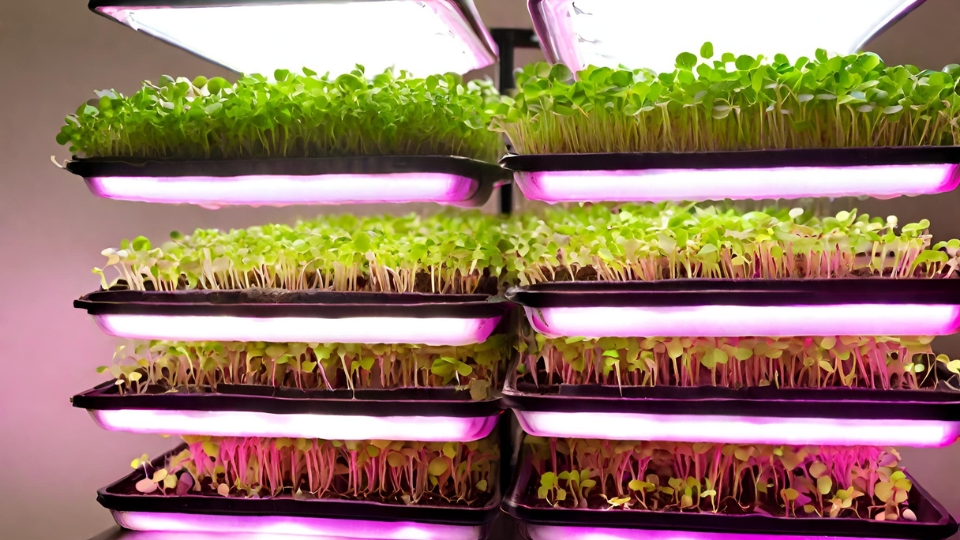
Factors To Consider When Choosing Grow Lights
Various factors impact the effectiveness of grow lights for microgreens. Here are some key points to keep in mind:
- Light spectrum: Full-spectrum lights are ideal for a broad range of plants.
- Intensity: High light intensity ensures strong, sturdy growth.
- Duration: Microgreens need around 14-16 hours of light per day.
- Energy efficiency: Less energy use means lower bills and a smaller carbon footprint.
- Heat output: Lower heat lamps reduce the risk of overheating your plants.
- Size: The grow light should fit your growing area well.
- Cost: Initial investment and long-term expenses both matter.
Led Vs. Fluorescent: Pros And Cons
LED and fluorescent lights are two popular choices for indoor gardening. Here are their advantages and drawbacks:
| LED | Fluorescent | |
|---|---|---|
| Energy Efficiency | More efficient | Less efficient |
| Heat Output | Low heat | More heat |
| Lifespan | Longer (up to 50,000 hours) | Shorter (around 20,000 hours) |
| Initial Cost | Higher | Lower |
| Light Quality | Full spectrum available | Good for growth phases |
Despite the higher upfront cost, LED lights are top choices for energy conservation and long-term savings. They also do not produce much heat, protecting your microgreens from heat stress.
While cost-effective, fluorescent lights may lead to higher electricity bills over time. These lights are adequate for microgreen growth but may need frequent replacement.
Optimizing Light For Microgreens Growth
Microgreens need the right light to grow strong and healthy. Let’s dive into how to give your tiny greens just what they need.
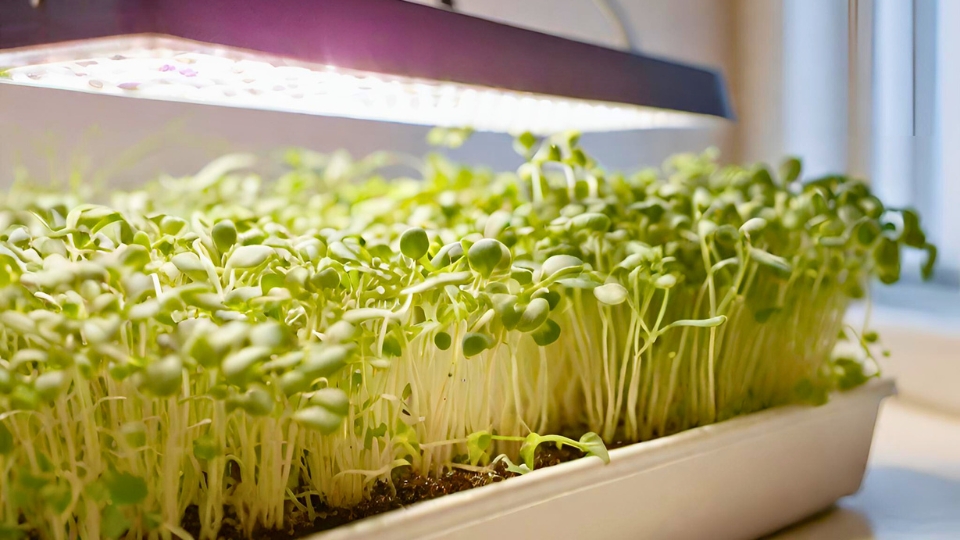
Finding The Perfect Light Intensity
Microgreens love light, but not too much! To keep them happy, strike a balance with the right intensity. Here’s how:
- Measure light with a lux meter or an app.
- Aim for 1100 to 1500-foot candles for the best growth.
- Adjust the grow light height to increase or decrease intensity.
The Importance Of Light Cycles
Like us, microgreens need a good day’s work and a night’s sleep. Setting up the perfect light cycle helps them grow:
| Stage | Light | Dark |
|---|---|---|
| Germination | 0 hours | 24 hours |
| Early Growth | 14-16 hours | 8-10 hours |
| Mature Greens | 12 hours | 12 hours |
Set a timer to automate the light cycle. Your microgreens will thank you!
Setting Up Your Grow Light System
Growing microgreens just got easier with the right grow light system. Proper lighting ensures healthy growth and optimal harvests. This guide focuses on setting up a grow light system that turns seedlings into vibrant greens.
Step-by-step Installation Guide
- Unbox your grow light and read through the manufacturer’s instructions.
- Identify a stable location near a power outlet and your microgreens.
- Assemble the stand or support for your grow light, if applicable.
- Secure the light fixture to the stand and adjust to the recommended height.
- Plug in the light and switch it on to test functionality.
- Set the timer to accommodate your microgreens’ lighting schedule.
Tips For Maintaining Your Grow Lights
- Clean the bulbs with a dry cloth to remove dust and ensure maximum light output.
- Inspect cords and plugs regularly for signs of wear and tear.
- Replace bulbs as per the manufacturer’s recommended lifespan.
- Keep water away from the electrical parts to prevent damage.
- Adjust the light height as plants grow to maintain proper coverage.
Troubleshooting Common Grow Light Issues
Great microgreens begin with great lighting. Yet, even the best setups can face challenges. Grow lights help your mini plants flourish, but certain issues may arise. It’s vital to spot these problems quickly.
Let’s discover solutions for common grow light troubles affecting your tiny greens.

Dealing With Heat And Humidity
Microgreens need warmth, but too much heat can harm them. If leaves wilt or soil dries out fast, your lights might be too hot. Here’s what you can do:
- Raise the lights – Increase the distance between lights and plants.
- Adjust the duration – Reduce the time your lights are on to lower heat.
- Use fans – Circulate air and cool down your grow area with a fan.
- Check humidity levels – Use a hygrometer and keep humidity around 50%.
Understanding Light Burn In Microgreens
If leaves look bleached or yellow, they might get too much light. Your microgreens could have light burns. You’ll want to fix it quickly:
- Dim lights if possible, or use a lower-wattage bulb.
- Check light distance, ensuring your microgreens aren’t too close.
- Limits light hours so your plants won’t get too much exposure.
Enhancing Microgreens Yield With Strategic Lighting
Growing microgreens at home or commercially requires more than just planting seeds. You need to give them the right light to boost your harvest. This section aims to shed light on the topic of grow lights, specifically how to maximize your microgreen yield with smart lighting.
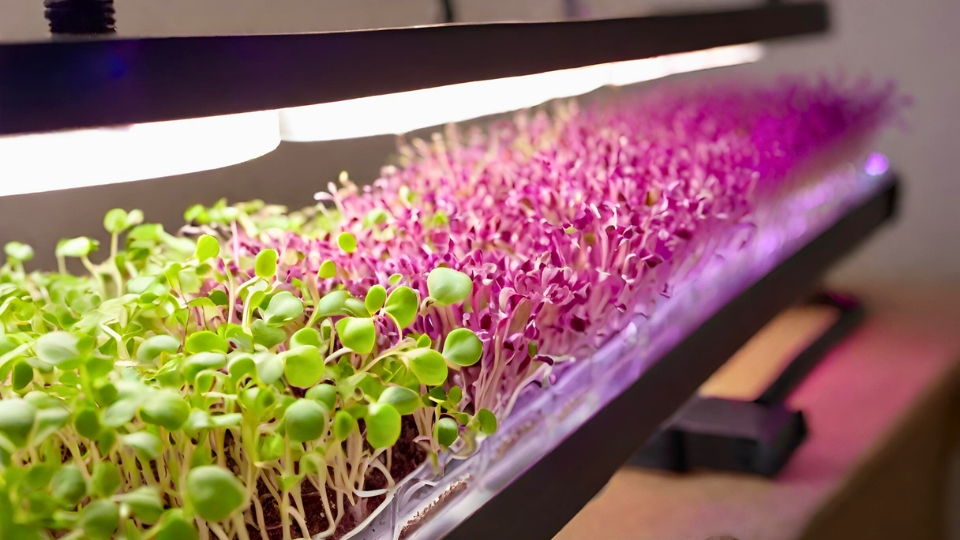
Lighting Techniques For Stronger Plants
Proper lighting makes your plants strong and healthy. You can encourage your microgreens to develop better leaf structure and vibrant colors using specific lighting techniques.
Here are some techniques to consider:
- Adjustable Intensity: Change light intensity to match the growth stage.
- Uniform Coverage: Ensure even light distribution for all plants.
- Color Spectrum Tuning: Use lights that mimic the sun’s spectrum.
Timing Your Lights For Maximum Growth
Light schedules impact how fast microgreens grow. With the right timing, your greens will get the optimal energy they need throughout the day. Here’s what to follow:
| Stage | Light Duration | Intensity |
|---|---|---|
| Germination | 0 Hours | Dark |
| Early Growth | 14-16 Hours | Medium |
| Mature Growth | 16-18 Hours | High |
Remember to turn the lights off during the night to simulate natural conditions. This will promote a healthy growth cycle.
Case Studies: Success Stories In Microgreens Cultivation
Microgreens have surged in popularity, prized for their nutritional punch and versatility. This section highlights individuals and businesses that have thrived by incorporating grow lights in their microgreen cultivation ventures.
Their stories inspire, showing how technology meets nature to fuel growth and success.
From Hobbyists To Commercial Farmers
The journey from small-scale hobbyists to commercial microgreen farmers is filled with determination and smart decisions. Success stories often begin in a humble setting, perhaps a small home garden, where hobbyists experiment with different grow lights to optimize their harvests.
An example is Sarah’s Sprouts, a startup that transformed a garage into a thriving microgreens factory. By leveraging LED grow lights, which are energy-efficient and emit an ideal spectrum for plant growth, Sarah’s business grew tenfold within a year.
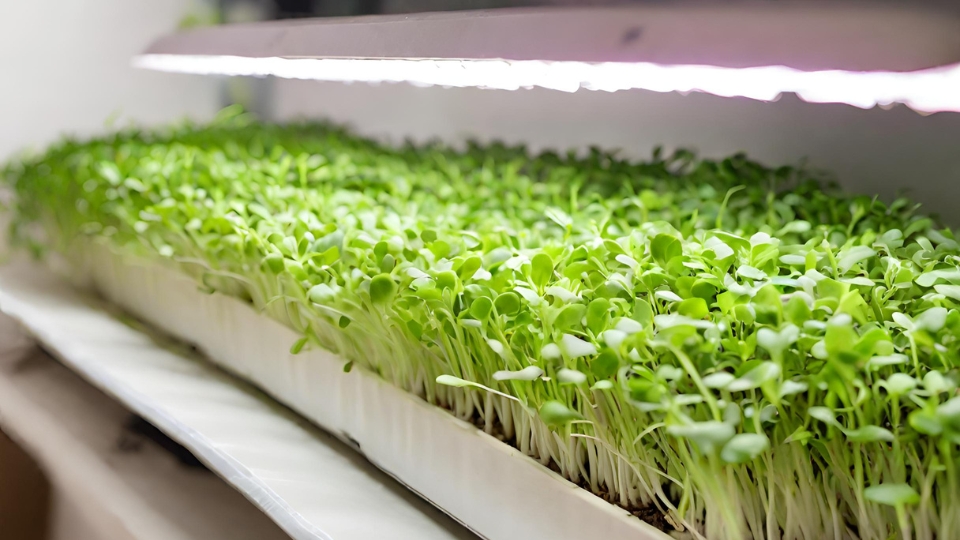
The table below illustrates the impact of introducing LED grow lights to her operations:
| Parameter | Before LED Lights | After LED Lights |
|---|---|---|
| Yield per Harvest | 50 batches | 500 batches |
| Energy Costs | High | Low |
| Harvest Cycle | 3 weeks | 2 weeks |
Innovative Uses Of Grow Lights In Urban Settings
City dwellers have embraced grow lights to cultivate microgreens in unconventional urban spaces. From rooftops to repurposed warehouses, innovation stories are inspiring.
Take, for instance, Urban Greens, an enterprise that turned an unused subway tunnel into a lush microgreens farm. Despite lacking natural sunlight, they achieved impressive year-round production capacity by installing high-intensity grow lights and utilizing hydroponic systems.
- Their venture supports local restaurants with fresh produce.
- Urban Greens has created new jobs in the community.
- They educate people about sustainable urban agriculture.
The ripple effect of such resourcefulness is far-reaching, proving that urban settings can be transformed into green food hubs with the right approach and technology.
Frequently Asked Questions For Grow Lights For Microgreens
What Lights Are Best For Growing Microgreens?
The best lights for growing microgreens are full-spectrum LED lights. They provide the necessary wavelengths for optimal plant growth and are energy-efficient.
How Many Lumens Does It Take To Grow Microgreens?
Microgreens typically require about 100 to 200 lumens per square foot. For optimal growth, aim for the higher end of this range.
Can You Grow Microgreens Without Grow Lights?
Yes, microgreens can be grown without grow lights by relying on natural sunlight as the primary light source for photosynthesis.
Conclusion
Embracing the right grow lights can significantly boost your microgreens’ vitality and yield. It’s a clear win for urban farmers and hobbyists alike. Your greens will thrive with a tailored light setup, promising abundant harvests.
Remember to assess your needs space, and go green with your choice – your microgreens will thank you!
Video Source: https://www.youtube.com/watch?v=Vw1OuoxuR6I

